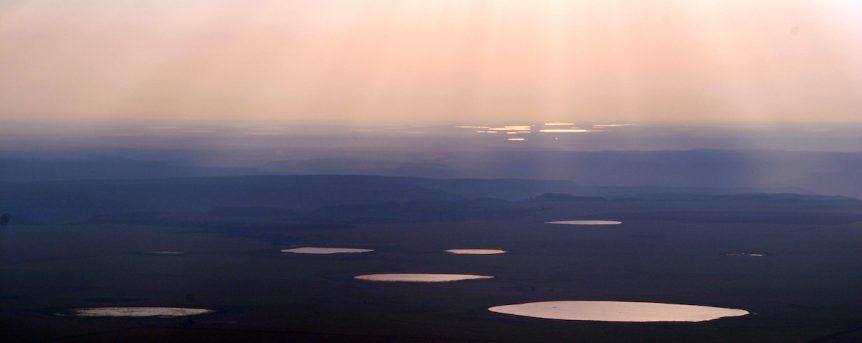Read the Transcript
Scientists are increasing their understanding of how playas, including rainwater basins, contribute to our landscape. They’ve learned these temporary lakes are a major source of aquifer recharge. But there’s another aspect — an organic aspect — the abundant biodiversity found around playas.
An example, those twice-yearly commuters, the migrating shorebirds, is something Susan Skagen, a research wildlife biologist, has spent her career studying. She’s with the U.S. Geological Survey at Fort Collins. More than 20 years ago, when she started her work at Cheyenne Bottoms, the wetland north of Great Bend Kansas, it was thought to be a primary staging site for the majority of shorebirds crossing the mid-continent.
“The particular year I started my work, however, Cheyenne Bottoms was fairly dry and had very little shorebird habitat. Then we noticed how many shorebirds were in all the small wetlands scattered all across the mid-continent region. So, studying shorebirds at this broader scale was very appealing.”
And very interesting, owing to the broad diversity of birds migrating north and south, and using wetlands, including playas, for rest stops.
“You’ll see a lot of the shorebirds that are making very long-distance migrations: White-rumped Sandpiper, Semipalmated Sandpiper, Baird’s Sandpiper, American Golden-Plover. They go right through the heart of the plains. It’s the shortest distance from Tierra del Fuego, which is how far some of them actually fly from, all the way up to the arctic.”
Tom Flowers is a retired conservationist with the U.S. Department of Agriculture at Meade, Kansas. Talk to Flowers — an enthusiastic bird-watcher — for just a short time, and his astonishment about the life-cycle of these playas becomes apparent.
“They can be dry for 15 or 20 years, have a rainfall event, and immediately perennial plants show up. They’ve lay dormant beneath the ground for all these years and as soon as that soil becomes moist, they shoot up and produce bulrush, cattails, mud plantain, spikerush, a host of plants. But even more fascinating to me are the small little animals that live in these playas. They fall down in the cracks when it’s dry, and they just lay there as eggs. As soon as it gets wet, within just a few days, the eggs hatch,they become small invertebrates such as fairy shrimp, tadpole shrimp, clam shrimp, snails. And these invertebrates then complete an entire lifecycle in as little as 15 days, and start laying eggs again.”
The grasses, the plants, those little invertebrates Tom mentioned… all of it’s a ready feast for the birds — both the locals and the commuters.
“Interesting to me, as well, is how many birds eat these small little animals in the water. So, even though they don’t have water very long, they’re absolutely critically important for not only migratory birds but also our summer resident and resident birds for nesting and feeding.”
To hear Flowers tell it, it’s as if playas are the town square for wildlife. “Not only birds, but bison, raccoons, coyotes, deer, everything had to have a drink.”
New Mexico rancher John Wood, who’s about 40 miles north of Clovis, remembers the sounds of wildlife surrounding the 160-acre playa on his ranch.
[birdsong]“When I was a kid, I remember the geese and the cranes and the ducks… and sometimes they’d make so much noise you couldn’t sleep at night.
Playa Country, which ended in late 2016, was a weekly show that featured conservation and wildlife experts — as well as farmers, ranchers and land managers — talking about conservation practices that improve wildlife habitat and landowners’ bottom-line. Originally broadcast in September 2012.

